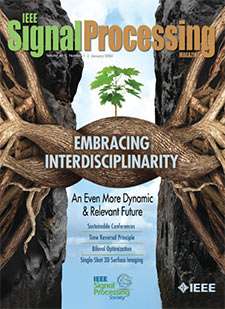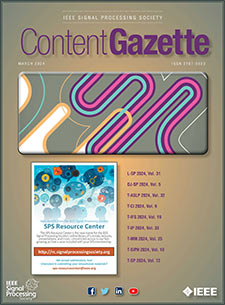Radio Map Estimation: A data-driven approach to spectrum cartography
Top Reasons to Join SPS Today!
1. IEEE Signal Processing Magazine
2. Signal Processing Digital Library*
3. Inside Signal Processing Newsletter
4. SPS Resource Center
5. Career advancement & recognition
6. Discounts on conferences and publications
7. Professional networking
8. Communities for students, young professionals, and women
9. Volunteer opportunities
10. Coming soon! PDH/CEU credits
Click here to learn more.
Radio Map Estimation: A data-driven approach to spectrum cartography
Radio maps characterize quantities of interest in radio communication environments, such as the received signal strength and channel attenuation, at every point of a geographical region. Radio map estimation (RME) typically entails interpolative inference based on spatially distributed measurements. In this tutorial article, after presenting some representative applications of radio maps, the most prominent RME methods are discussed. Starting from simple regression, the exposition gradually delves into more sophisticated algorithms, eventually touching upon state-of-the-art techniques. To gain insight into this versatile toolkit, illustrative toy examples will also be presented.
Spectrum cartography comprises a collection of techniques used to construct and maintain radio maps, which provide useful information on the radio-frequency (RF) landscape, such as the received signal power, interference power, power spectral density (PSD), electromagnetic absorption, and channel gain across a geographic area; see, e.g., [1], [2], and [3]. A quick overview of the most representative types of radio maps is provided in Table 1.
Radio maps find a myriad of applications in wireless communications and networking, such as network planning, interference coordination and mitigation, power control, resource allocation, handoff management, multihop routing, dynamic spectrum access, and cognitive radio networking tasks; see [4] and [5] and the references therein. Radio maps are also useful for localization [2] and tomography [6].
Arguably, spectrum cartography can be traced back to the application of Maxwell’s equations to characterize the propagation of radio waves across space. However, due to insufficient computational capacity, this approach has been traditionally confined to problems involving relatively simple geometries, such as determining the electromagnetic field radiated by a dipole. To analyze more complex environments, numerous empirical models have been developed, such as the well-known P recommendations from the International Telecommunication Union–Radiocommunication Sector. Unfortunately, this kind of model often fails to provide estimates that are accurate enough for a given application [7].
SPS on Twitter
- DEADLINE EXTENDED: The 2023 IEEE International Workshop on Machine Learning for Signal Processing is now accepting… https://t.co/NLH2u19a3y
- ONE MONTH OUT! We are celebrating the inaugural SPS Day on 2 June, honoring the date the Society was established in… https://t.co/V6Z3wKGK1O
- The new SPS Scholarship Program welcomes applications from students interested in pursuing signal processing educat… https://t.co/0aYPMDSWDj
- CALL FOR PAPERS: The IEEE Journal of Selected Topics in Signal Processing is now seeking submissions for a Special… https://t.co/NPCGrSjQbh
- Test your knowledge of signal processing history with our April trivia! Our 75th anniversary celebration continues:… https://t.co/4xal7voFER














